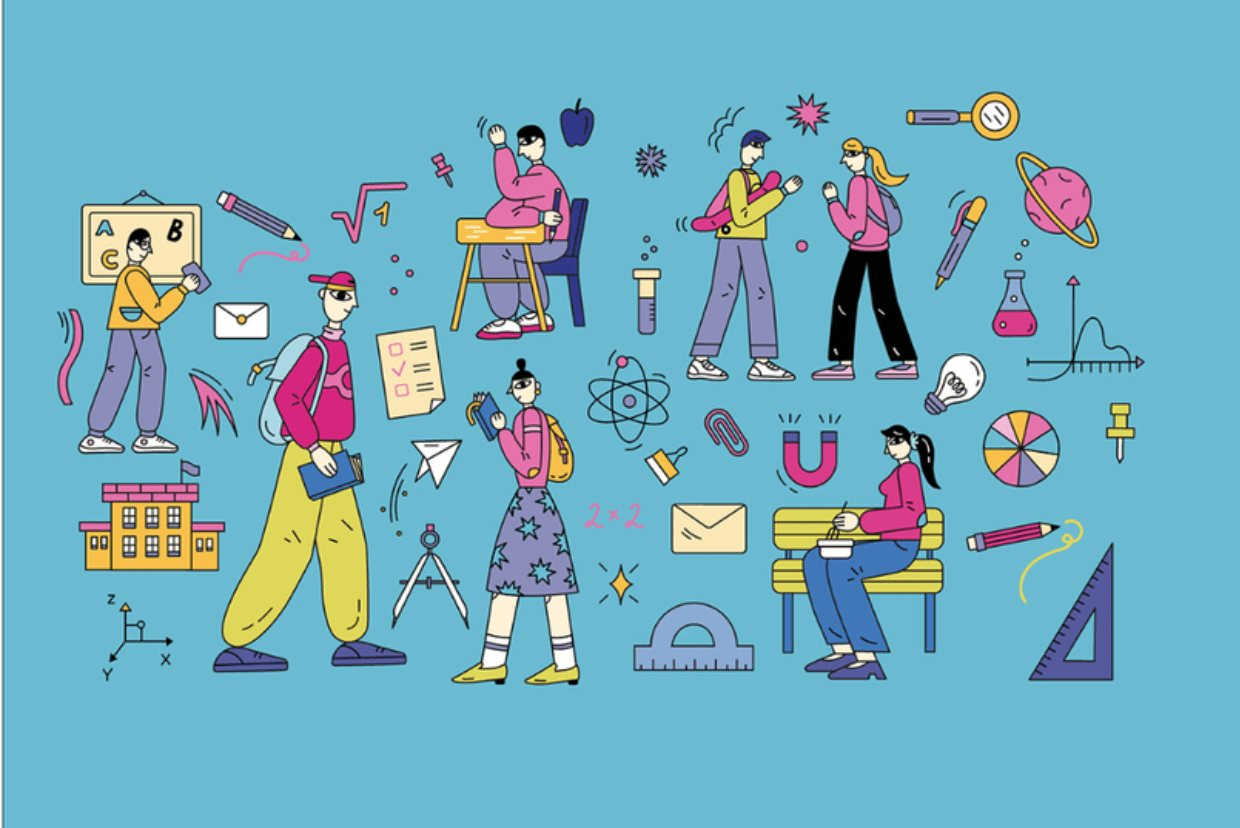
Image credit: Skool is kool
Two years into the pandemic, it’s time to cut through the hype of what the ‘future of education’ will look like and think about where the Edtech industry is right now. While we may have forgotten about the masks (at least for now), education will never go back to the way it was in 2019.
So what can make or break an Edtech products? Here are a few major edTech trends that are not stealing the headlines but are equally important for EdTech innovation - and how you can address them in your own product development moving forward.
Edtech doesn’t need to be disruptive to be innovative
As much as we are all tempted to dive into the big hype of immersive, futuristic new learning tech, it’s worth taking a step back to think about the actual impact that these technologies can have on learning and teaching.
'There is a naive assumption that rich, multi-sensory experiences automatically translate into meaningful learning experiences.”
For a few years now, even before the pandemic, we’ve heard about all the robotics, VR headsets and AI technologies stealing the show at the annual BETT trade shows. And yes, while mainstream technologies are now a fact in education, it makes little sense to hopelessly try to attach technological innovations to education, without first understanding the underlying needs and pain points that teachers, students and education administrators face in the current learning reality. On our blog, we’ve also talked about Learning Experience Design (LXD) and its importance when building edtech products.
To make edtech really work, we should look for ways to make content and pedagogy in sync with technology, with the goal of achieving better learning outcomes. What Junaid Mubeen proposed is for Education innovators to start with these questions:
-
What is your pedagogy? At the very least, can you list your educational goals?
-
What does it mean for your solution to work and how will this be measured in a way that is meaningful and reliable?
-
How are your users supported to achieve their educational goals after the point of sale?
-
How do your solutions interact with other offerings in the marketplace?
A case in point: The Help me Thrive platform
In 2021, we worked with UNICEF Bulgaria to deliver an interactive learning hub for children with special education needs, where parents, children and teachers can exchange resources, lessons and advice. The ‘Help me thrive’ platform did not include any unprecedented technology - it was in fact fairly straightforward in terms of development and design. And while similar mainstream platforms existed, none of them had the necessary accessibility features that the children needed. We took it as a task to build a platform that is functional and stripped away of any unnecessary design features, so that children and parents can make the best of the platform.

From asynchronous & Synchronous learning to adaptive learning
Synchronous classes run in real time, with students and instructors attending together from different locations. Asynchronous classes run on a more relaxed schedule, with students accessing class materials during different hours and from different locations. While asynchronous learning has been labeled as modern, study-at-your-own-pace and is generally related to online learning, we believe the best results for learners and teachers are achieved with the right balance of both. It makes little sense to compare which is better than the other, as both synchronous and asynchronous learning have their benefits and disadvantages.
.png)
Christopher Tuffnell, an instructor in innovative and digital education at the University of Wollongong in Dubai, says that whenever he wants students to understand an especially important part of his course, he delivers it asynchronously to help learners digest and engage with the data. On the other hand, he says,
“When I want students to create, evaluate, analyze and apply certain concepts, then I create a synchronous space that’s guided by the instructor and characterized by in-person peer interaction.”
The power is mostly in the educator’s mind about what is best method to deliver a specific topic, and it is up to Edtech innovators to provide them with the tools they need. How can you do that? Focus on truly understanding how your product fits within the learning-teaching dynamic.
Is your product good for introducing a topic in an engaging way?
Or is it more suitable for presenting a complex topic in a well-structured, and easy to follow manner?
Teacher onboarding should be your priority
Teachers need more product support and better onboarding experiences to make the best use of modern teaching technologies. Right now, teachers are spending hours in trying to package and combine multiple digital tools, platforms and resources together to deliver their curriculum. Using one tool for online discussions, another for presentation delivery, and a third for examination is just the start.
They need more support than ever from product owners on ways to integrate software choices and get the most out of every tool. Strive to provide teachers with a step-by-step vision for how to integrate your edtech application with the solutions they already use. What seems like a small addition, can immensely help teachers in the classroom and cut down the amount of time they have to spend playing ‘tech support’. After all, we want teachers to spend more time doing what they do best — teaching our students.

Source: Teaching Humour
Moving on with the new Edtech reality
EdTech is never going back to its old assumptions about product design. Despite all the challenges presented by remote learning, there are more opportunities than ever to design for teachers, students and parents right where they are. When looking at the current trends, don’t forget that there always needs to be substance and reasoning behind it. It’s not enough to just be cool and ‘disruptive’: a concept has to execute too.
Are you ready to address these new and evolving needs in your own product design? Get in touch.




